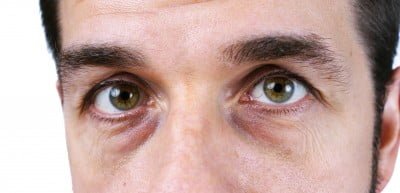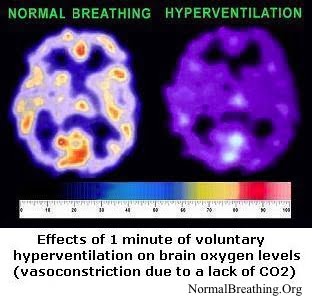- Updated on September 13, 2020
![]() By Dr. Artour Rakhimov, Alternative Health Educator and Author
By Dr. Artour Rakhimov, Alternative Health Educator and Author
- Medically Reviewed by Naziliya Rakhimova, MD
Bags Under Eyes: Causes and Solutions
 Bags under eyes (also called “periorbital puffiness”) should not be confused with dark circles under eyes. Millions of people can suffer only from one, but not from the other condition. Some men may have both challenges, swelling with dark circles under eyes (see the image on the left side).
Bags under eyes (also called “periorbital puffiness”) should not be confused with dark circles under eyes. Millions of people can suffer only from one, but not from the other condition. Some men may have both challenges, swelling with dark circles under eyes (see the image on the left side).
What causes bags under eyes?
According to the basics of physiology, water travels among different body compartments while obeying laws of physics following salts and other components of body fluids. These salts, amino acids and other chemicals generally move across epithelial layers due to the active transport that requires oxygen either for a man or woman
Oxygen is provided to cells due to the process that is called “respiration” (breathing). This graph below explains why humans living many decades ago had bright healthy eyes (that you can see in dozens of old movies) and bags under eyes were uncommon.
 The situation with contemporary males and females is very different. They suffer from chronic overbreathing and reduced blood flow and reduced O2 content in cells and ionic pumps that move chemicals. This is the key cause of bags under eyes. For additional secondary causes, you may check this link.
The situation with contemporary males and females is very different. They suffer from chronic overbreathing and reduced blood flow and reduced O2 content in cells and ionic pumps that move chemicals. This is the key cause of bags under eyes. For additional secondary causes, you may check this link.
It is common for many modern men and women have less than 20 s for the DIY body-oxygen test. Note that the medical norm for this test is about 40-50 seconds, and ordinary people in the past had over 40 s of oxygen in body cells.
Home remedies for bags under the eyes
Over 200 Russian medical doctors, mainly family physicians, found that the problem with bags or puffiness around or under the eyes naturally disappears, when their patients start to slow down their automatic breathing patterns. The effect often takes place within 1-3 days. Here are the major goals for the total solution of this problem, while applying breathing retraining:
1. Increase body oxygenation up to at least X seconds 24/7 to boost the blood flow and oxygenation of all body cells naturally. This number X is provided right below here as your bonus content.
30 seconds for the CP does the trick, but often 20+ seconds is enough to reduce the problem with bags under eyes a lot.
[/sociallocker]
2. Sleep on a hard surface (e.g., floor with a thin blanket on it) in order to move more during sleep and have better body circulation and oxygenation. See Sleep Modules for other sleeping tips.
3. Avoid supine sleep (that is the worst sleep position according to all 24 clinical studies that compared the effects of sleep postures on health).
4. Ground yourself (ideally for the whole duration of sleep or for 1-2 hours during the day) to reduce blood viscosity, improve O2 delivery, and eliminate possible inflammation.
5. Exercise only with nose breathing (in and out) for safety, lower heart rate and better body O2 after exercise.
6. Avoid drinking water after 6 pm or within 5-6 hours before sleep.
Note for people with kidney disease or nephritis. These people often require water restriction due to reduced kidney function. Otherwise, they can accumulate additional 2-4 liters of water causing severe headaches and bags under the eyes.
– This page in Spanish: Bolsas debajo de los ojos: Causas y soluciones.


